DEEP BLUE SEA
The fishy business of artificial reefs
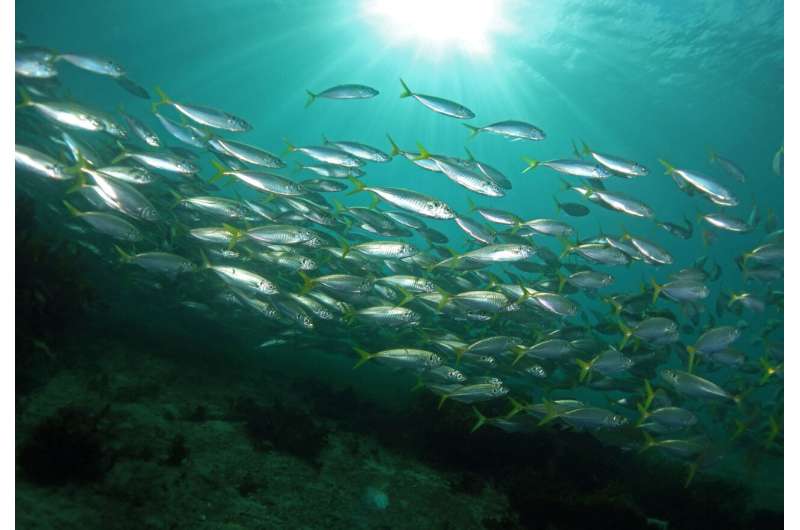
UNSW scientists have uncovered why artificial reefs attract more small foraging fish, or baitfish, than natural reefs.
It's an important finding which could lead to more effective manmade reefs being built to help recreational fishers.
Using a high-tech fish finder called a multibeam echosounder, the School of Biological, Earth and Environmental Sciences researchers gained a 3D picture of five natural and three artificial reefs off Sydney during the day and at night and under different conditions.
They found that the tall vertical habitats provided by the 9-meter-high artificial reef allowed baitfish such as yellowtail scad and mado to spread out and feed much higher above the seafloor while still remaining close to the safety afforded by physical structures.
Because they had a higher structure to protect them, these bottom-of-the-food chain fish also had more access to food—drifting plankton—than they would receive on a low-lying natural reef.
And thanks to the 'meal delivery service'—the East Australian Current—consistently delivering a conveyor belt of plankton as their food, these baitfish are eating more, with subsequent benefits for their predators, including the bluespotted flathead, one of NSW's most iconic commercial and recreational fish.
Their study, which has been published in Marine Ecology Progress Series, has implications for the eight artificial reefs in New South Wales.
"Zooplankton and these small fish support around half of the fish biomass," one of the study authors, Professor Iain Suthers from the School of Biological, Earth and Environmental Sciences says.
"The schools of these small fish are sometimes referred to as a 'wall of mouths' as they persist over a reef and peck the zooplankton from the tidal flow.
"They connect plankton to the fishery and underpin the sustainability of bluespotted flathead and this has implications for the sustainability of coastal fishing near heavily urbanized areas because the flathead ambush these small baitfish."
The study describes the so-called "pinch point" of the coastal food web and helps explain why reefs around Sydney can be such productive habitat for forage fish, despite a 50 percent decline in kelp, which itself supports coastal food webs and subsequently fish off the NSW coast.
Lead author Matthew Holland, who conducted the research when he was a Ph.D. candidate at UNSW Science and is now a Research Fellow at University of Plymouth in the UK, says artificial reefs allow the fish to use space differently than they do in nearby natural habitats.
"Across temperate and subtropical coastal areas, like the coast of Sydney, much of the seafloor is relatively flat and featureless," Dr. Holland says.
"But rocky reefs or any form of hard structure on the seafloor is rare overall and fish tend to congregate on structures such as artificial reefs.
"By building artificial reefs as 'skyscrapers' rather than 'single-story buildings," we can provide more usable space for the fish, which can travel up and down in the water column while remaining close to these structures for protection from predators."
Dr. Holland says they were surprised by the huge quantity of plankton actually drifting over the natural and artificial Sydney reefs.
"We collected zooplankton samples by towing nets behind the boat during our surveys," he says.
"Based on the speed of the current, we worked out that 43 grams of zooplankton was delivered to each square meter of reef every hour during the day.
"Based on the energy requirements of the fish we studied, each square meter of reef could potentially support up to 25 kilograms of fish feeding only on these tiny organisms."
The eight artificial reefs in New South Wales are installed at South Head in Sydney, Port Hacking in South Sydney, Shoalhaven, Port Macquarie, Merimbula, Newcastle, Wollongong and Tweed Heads.
Like artificial reefs, oil rigs off California have been found to be some of the most productive reef habitats.
Prof. Suthers says the study justifies the decommissioning of old oil and gas pipelines or platforms in the Bass Strait and the North-West Shelf for use as artificial reefs.
But Dr. Holland says that while the scientists demonstrated why artificial reefs can be more productive than natural ones, they aren't necessarily a replacement for natural reefs.
"Natural reefs often have higher biodiversity because they contain a wider variety of habitats which can therefore support a wider variety of organisms," he says.
"It is important that we preserve natural reefs as well to maintain this biodiversity."
Now the scientists are keen to see their findings shape the design and location of future artificial reefs in the hope of enhancing coastal environments and improving opportunities for recreational fishers.Fish reef domes a boon for environment, recreational fishing
More information: MM Holland et al, Fine-scale spatial and diel dynamics of zooplanktivorous fish on temperate rocky and artificial reefs, Marine Ecology Progress Series (2021). DOI: 10.3354/meps13831
Journal information: Marine Ecology Progress Series
Provided by University of New South Wales
Region of “Super Corals” Discovered Thriving in Extremely High Levels of Carbon Dioxide
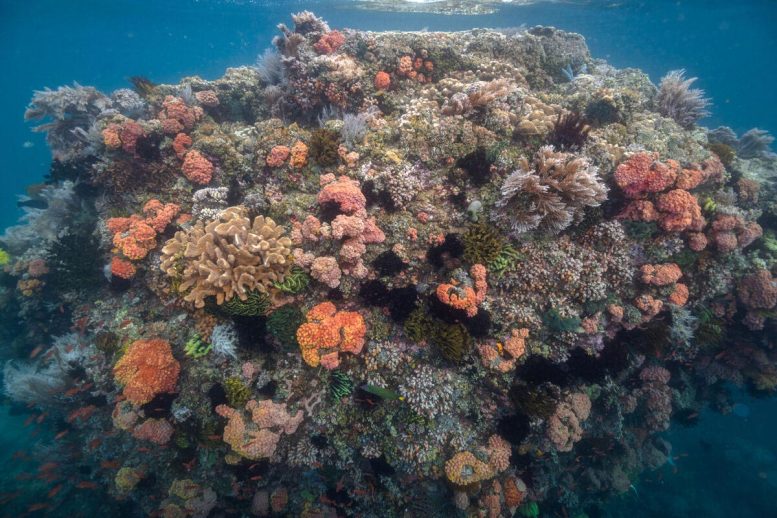
Corals found in an area of the ocean with extremely high levels of Carbon Dioxide in the Verde Island Passage in the Philippines. Credit: University of Texas at Austin,
In 2019, a hydrology professor at The University of Texas at Austin set out on a research project to see if he could identify harmful nutrients flowing through groundwater into a delicate coral reef sanctuary in the Philippines. He achieved this goal, but following the long history of accidental scientific discoveries, he instead stumbled upon something completely unexpected: a region of possible “super corals” that are thriving despite high levels of carbon dioxide.
The findings based on the 2019 field work were published in August in the journal ACS ES&T Water.
For the first time, the UT Austin professor, Bayani Cardenas, and a team of international researchers were able to attribute the source of CO2 and other gases and nutrients in seawater at this location to groundwater, a finding that the researchers believe shows how the undersea reef environment can be vulnerable to the way communities discharge wastewater, agricultural runoff and other byproducts into the sea.
“This is an unseen vulnerability,” said Cardenas, a professor in the Department of Geological Sciences at the UT Jackson School of Geosciences. “We’ve been able to show with this site that groundwater is part of these delicate coral reef environments. There is a connection, and that’s still not as accepted in science and in many parts of the world.”
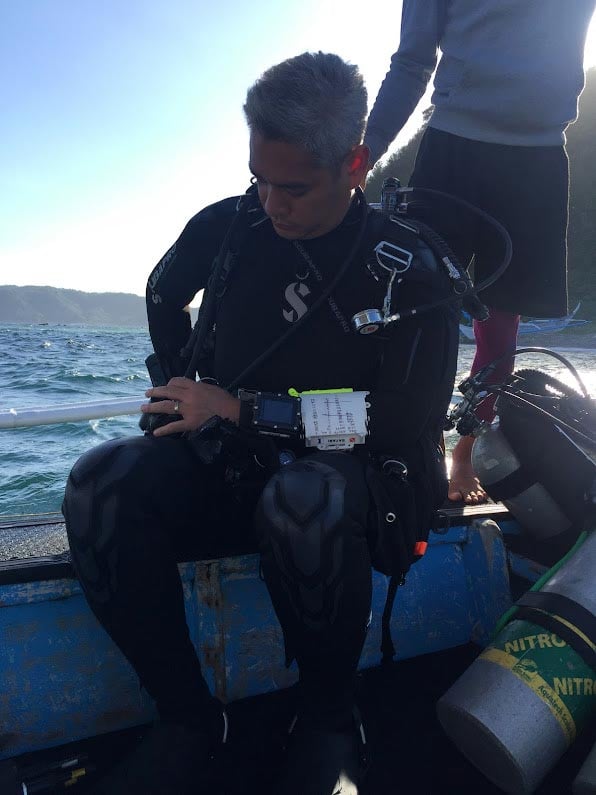
Bayani Cardenas, a professor at the University of Texas Jackson School of Geosciences, prepares to dive during research to track the impact of harmful nutrients flowing through groundwater into a delicate coral reef sanctuary in the Philippines. Credit: University of Texas at Austin,
More than that, Cardenas said the research has led to new questions — and new research proposals — about the super corals they found that could be replicated elsewhere in the coming years as global CO2 levels are expected to rise.
Coral reefs have long been suffering due to climate change, most notably during a global coral bleaching event from 2014 to 2017 that caused heat stress to 75% of the world’s reefs, according to the American Meteorological Society. Yet the coral-filled area Cardenas studied in the Verde Island Passage in the Philippines, a region so vibrant and diverse that he refers to it as the “Amazon of the ocean,” is thriving despite the vast amounts of CO2 being pumped in from groundwater.
Lead author Rogger E. Correa, a researcher at Southern Cross University in Australia, estimated that groundwater is pumping about 989 grams of CO2 per square meter per year into the area they studied, which is known as “Twin Rocks” and borders a chain of volcanoes. That’s the equivalent of parking two cars on the seabed and letting them emit carbon dioxide for a full year on every hectare of reef.
To distinguish groundwater from seawater, the scientists submerged devices that measure the levels of CO2 and radon 222, a naturally occurring radioactive isotope that is found in local groundwater but not in open ocean water. The measurement technique was developed by co-author Isaac Santos, a professor at the University of Gothenburg in Sweden.
This work follows a 2020 study conducted by Cardenas where he discovered CO2 bubbling up from the seafloor off an area of the Philippine coast so dramatically that he dubbed it “Soda Springs.”
The end result from the latest investigation is an entire region of coral reefs that must be studied more closely, said Cardenas, who is a geoscientist and not a coral researcher.
Adina Paytan, a research scientist at the Institute of Marine Sciences at the University of California, Santa Cruz, who was not associated with the study, warned that other human-made stressors, including sedimentation, overfishing and pollution, can still doom coral reefs. But she was heartened that Cardenas’ team showed corals can grow in high-carbon environments, a finding that “provides some hope for the future of corals.”
Reference: “Submarine Groundwater Discharge Releases CO2 to a Coral Reef” by Rogger E. Correa, M. Bayani Cardenas, Raymond S. Rodolfo, Mark R. Lapus, Kay L. Davis, Anna B. Giles, Jose C. Fullon, Mithra-Christin Hajati, Nils Moosdorf, Christian J. Sanders and Isaac R. Santos, 4 August 2021, ACS ES&T Water.
DOI: 10.1021/acsestwater.1c00104
Study co-authors included researchers from the Leibniz Centre for Tropical Marine Research (ZMT) in Germany; the State Office for Mining, Energy and Geology in Germany; and the following institutions in the Philippines: Ateneo de Manila University, Agricultural Sustainability Initiatives for Nature Inc., and Planet Dive Resort.
How having a favourite food can kill you: An 83 million year chronicle of shark evolution
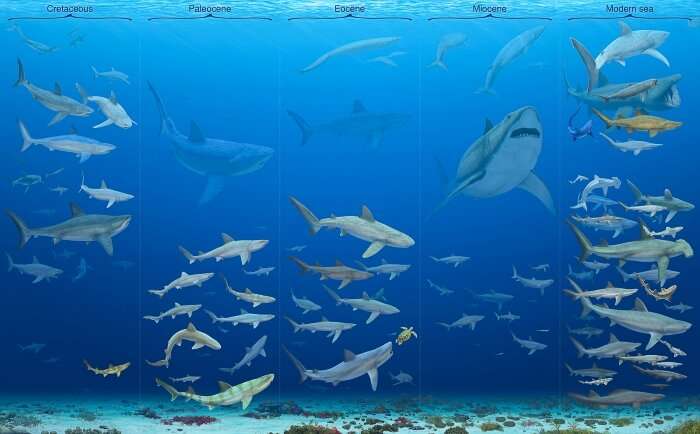
The availability of prey and the ability to adapt to changing environments played key roles in the evolution of sharks. A new study, where 3,000 shark teeth were analyzed, provides new insight into how modern shark communities were established. The results are published in the journal Current Biology.
The new research investigated the diversity of shark teeth from the final stages of the Mesozoic (approximately 80 million years ago) to today. In particular, it sought to understand why there are only 15 species of mackerel sharks living today (scientific name: Lamniformes), whereas there are more than 290 species of ground sharks (Carcharhiniformes).
"The modern-day imbalance in diversity between the mackerel ground sharks have, until now, lacked a deep-time ecological perspective. However, if we look to the past, we see the opposite pattern: lamniforms were more diverse than carcharhiniforms" says study leader Dr. Mohamad Bazzi, previously a researcher at Uppsala University but now at the University of Zurich.
The evolution of sharks is a story told by their teeth. This is because most of what remains behind for paleontologists to work on are shed teeth. As a result, researchers must seek innovative approaches to help us fill out the many gaps in knowledge that relates to their past.
"Tooth morphology is a more direct proxy for the living habits of sharks and our study is the first attempt to explore how diet impacted lamniform and carcharhiniform sharks over the past 83 million years. By measuring the association between tooth shapes and diets from living sharks, we built a foundation for interpreting changes in diet in the fossil record," says Dr. Bazzi.
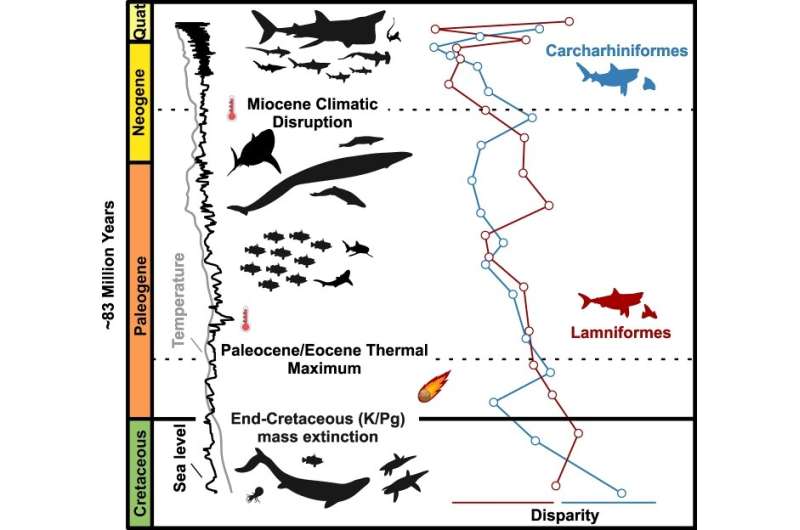
The research team compiled an extensive database of over 3000 shark teeth and then evaluated their shape. To attain a measure of shape diversity (or disparity as it's technically called) the study relied on a method known as geometric morphometrics, which is a type of mathematical shape analysis.
Likewise, to understand the role diet played in shaping the diversity of sharks, the team assembled previously published records of sharks diets attained from stomach contents.
Many Cretaceous Lamniformes had specialized diets for eating marine reptiles and, following their loss at the end of the age of dinosaurs, these Lamniformes went extinct. On the other hand, Lamniformes with more generalized diets and Carcharhiniformes survived the extinction event. Carcharhiniforms particularly benefited from the diversification of bony fish following the extinction event, and the spread of coral reefs about 56 million years ago.
As it turns out, the same extinction that killed off the non-bird dinosaurs, may have set the stage for the modern shark community.
A similar event may have occurred only 5 million years ago to the largest shark to have ever existed, the lamniform megalodon (scientific name: Otodus megalodon).
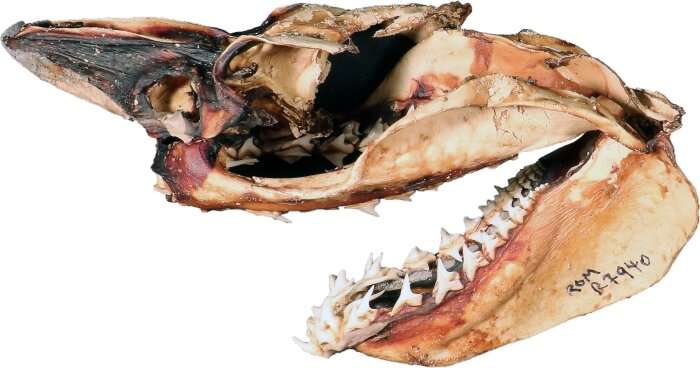
Megalodon fossils are mostly from the Miocene (which spanned from approximately 23 to 5 million years ago). During this period, lamniform sharks had record-low tooth disparity. Megalodon likely specialized on eating the large whales of that time and so this low disparity again suggests that specialized diets among top predatory sharks may be placing them at a greater risk of extinction.
"Here, we have a good example of the important biological insights offered by studying fossils," says Dr. Nicolás Campione, co-author and member of the University of New England's Palaeoscience Research Centre.
"Our research demonstrates that living Lamniformes are the result of repeated extinction events, perhaps resulting from a tendency to specialize. Dietary specialization, on top of environmental changes, were likely major factors behind the previously mentioned imbalance between Lamniformes and Carcharhiniformes," says Dr. Campione.
"We now have evidence that the availability of prey and the ability of sharks to adapt to changing environments played an important role in their past evolution. These factors underpinned the modern diversity of sharks and, critically, will likely decide their survival into the future," says Dr. Bazzi.
No comments:
Post a Comment